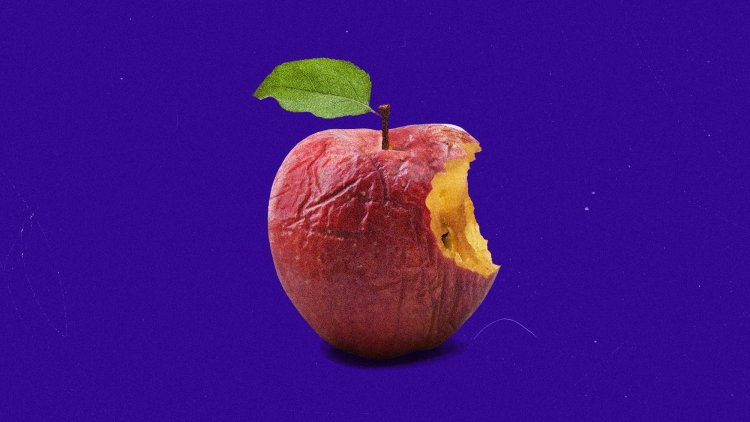Yet Another iPhone, Dear God
What do you mean, you don’t need four studio-quality microphones?

Today, in a streamed presentation, Apple announced the latest version of the iPhone, along with upgrades to the AirPods and the Apple Watch. As has been the case since the start of the pandemic, the presentation took the form of a prerecorded showcase, with lots of camera movement and hyper-rehearsed delivery by Apple staff. Over 100 interminable minutes, Apple demonstrated both ordinary activities (email, photo management) and professional ones (filmmaking, audio recording) that will be facilitated by modest updates to what amount to basically the same devices the company has made and sold for a decade. “What a remarkable day of announcements,” CEO Tim Cook said in conclusion, but I struggle to believe that he meant it. This was, let us be honest, merely a day of announcements.
I will acknowledge that various changes and improvements to the product lineup are, in fact, on offer. What they are, exactly, is wearying to explain—the annual announcement has become so jargon-rich that my brain shuts down to protect itself. Apple managers and senior vice presidents certainly rattled off a lot of features: a thin isolation split, a 16-core neural engine, the most advanced H2 chip. As usual, the numbers given to these updates are going up: This is the iPhone’s 16th generation, and the Apple Watch’s 10th. We’re up to A18 in Apple silicon, one better than the A17 chip that preceded it; the iPhone 16 Pro is made from grade-5 titanium, which must be at least a few times better than competitors’ shoddy eggshell casings of grade-2 titanium. The metal used in Apple’s device manufacture remains aerospace-grade (a fact made less celestial by the aviation industry’s increasing inability to make airplanes fly properly), and the iPhone Pro now features a 48-megapixel fusion camera that itself unfurls a second-generation quad-pixel sensor, which allows for, well, taking better pictures within a wider focal range.
It is no longer novel to note the lack of meaningful novelty in new smartphones. Yearly updates, even those issued by the world’s smartphoniest company, have only grown more modest. Indeed, success at the iPhone’s scale now demands some degree of ordinariness: Mass appeal cannot sustain rapid change or wild new ideas. Progress tames, and it domesticates. This is what that feels like.
I’m long “overdue” for an update to my iPhone 12 Pro, a sentiment that makes little sense even as I feel it acutely. I bought mine in 2020, a fairly recent year that nevertheless feels distant. What, precisely, am I meant to update? My phone works fine, insofar as it allows me to send and mostly delete emails, watch overproduced how-to videos on YouTube, order plates of awaze tibs or boxes of Bobo’s Pumpkin Spice Oat Bites on DoorDash, and even place the occasional telephone call, which sounds worse than ever once I manage to get my AirPods to properly connect.
Ah, but the iPhone 16 Pro is said to house not one but four “studio quality” microphones with improved signal-to-noise ratio. Also, I won’t be able to run Apple Intelligence—that’s the company’s take on generative AI—with my outdated processor. Eleven years ago, when I covered the debut of the iPhone 5S—the first model to have fingerprint security!—I likened the iPhone’s annual updates to a seasonal fashion catalog: Even then, the updates had less to do with innovation than with calendrical necessity. Apple Intelligence may well be something different. It’s already more than fashion: The technology allows the phone to summarize your emails, prioritize your notifications, and help you make your own emoji on the fly in the middle of a text exchange. It seems cool, well designed, and effectively integrated into the operating system.
[Read: The iPhone is now an AI Trojan horse]
But it’s a kind of fashion too. To update is to engage with the discourse on updating—to experiment with features rather than with utility. Do I want email summaries and bespoke, impromptu emoji? Sure I do, but I also feel disappointed in Apple’s lack of ambition. Is this all? Of course it is. What were you expecting? The company that sells pretty pocket phones has a new one, and you need it, or you want it in a way that feels like need, or else maybe you’ll receive it as a part of your endless leasing plan.
This year, the designs of these glass rectangles and ear lozenges, which have long been characterized by their smooth and futuristic surfaces, seem to yearn for the trappings of antique technologies. Take the newest Apple Watch, which can be viewed from oblique angles, with an always-on screen that accommodates a ticking seconds hand even when your hand is down. These, of course, have been features of wristwatches for hundreds of years. Or consider the newest AirPods: These devices were already meant to be in your ears more or less full time, but now they can act as earplugs too—or even as hearing aids. The iPhone has finally acknowledged that it wants to be a camera, adding a new, dedicated button for taking pictures—a fancy, Apple-fied version of the shutter release on a classic rangefinder or single-lens reflex camera. According to the presentation, an iPhone software update coming later this year will allow that button to detect half-presses for exposure or focus lock, as such buttons did for decades before cameras were imprisoned inside phones.
Future smartphones will continue to consume forgotten innovations of the past and then regurgitate them to us as if they’re new. And we will continue to devour them—in part because they will be new, and in part because we’ll have no alternative.
What's Your Reaction?




















